- Home
- Roger Zelazny
Shadows & Reflections: A Roger Zelazny Tribute Anthology
Shadows & Reflections: A Roger Zelazny Tribute Anthology Read online
Shadows & Reflections
A Roger Zelazny Tribute Anthology
Edited by
Trent Zelazny
and Warren Lapine
For Carl Yoke
©2017 Positronic Publishing
Individual stories copyrighted by their authors
Cover Design by Jay O’Connell
All rights reserved. Printed in the United States of America. No part of this book may be used or reproduced in any manner without written permission except for brief quotations for review purposes only.
ISBN 13: 978-1-5154-1846-7
Table of Contents
The Two Rogers
Playing God
Keeper of the Keys
And Fountains Flow
The Headless Flute Player
Creatures of Foam and Mist
Doorways In Time
Coda
Nights in the Gardens of Blue Harbor Chinkweed
The Night Heirs
There Shall Be No Moon!
Halflife
The Lady of Shadow Guard
Rock and Road
The Aspect of Dawn
Afterword
About the Authors
Acknowledgments
The Two Rogers
by George R. R. Martin
I was twice as fortunate as most. I knew two Roger Zelaznys. One was the writer. The other was my friend.
I met the writer first. It was 1967, and I was a college student, back home for the summer between my freshman and sophomore years at Northwestern. Though I had been reading science fiction voraciously for several years, the genre magazines seldom made it to the candy stores and spinner racks of Bayonne, New Jersey, where I bought my comics and Ace Doubles (Two Complete Novels for 35 cents, couldn’t beat that), so I had missed all of the early short stories that launched Roger’s career. The only hardcover books I could afford were those offered by the Science Fiction Book Club.
And then one day the club newsletter Things To Come turned up in my mailbox, and one of the offerings was a novel called Lord of Light by a writer whom I’d not heard of previously, though it claimed that he had already won both the Hugo and the Nebula. It was there in Things To Come that I first read those fateful words, “His followers called him Mahasamatman and said he was a god. He preferred to drop the Maha- and the -atman, however, and called himself Sam. He never claimed to be a god. But then, he never claimed not to be a god.”
I bought the book, of course. I wanted to hear more about this fellow Sam and check out this new (to me, at least) writer.
I had read Heinlein, Asimov, Vance, Bester, de Camp, Van Vogt, Andre Norton, Eric Frank Russell, Fritz Leiber, H. P. Lovecraft, Jack Williamson, Pohl & Kornbluth, all the classics. I fancied that I knew my science fiction, had even begun to write some of my own. . .but nothing that I had read previously prepared me for Lord of Light.
This was not like anything that had gone before. The poetry of the language. The way the author played with myth. The colorful background, the inventive world building, the non-linear structure. And of course the characters. Sam especially, who never claimed to be a god. By the time I closed the final page, Roger Zelazny had become one of my favorite writers. Not one of my favorite science fiction writers. One of my favorite writers.
Lord of Light was an awakening. For me and for the field. It won the Hugo Award and was nominated for the Nebula Award for the year of its publication, and if it were up to me, it would have won the Pulitzer as well. Lord of Light is one of those books that you need to reread every few years. Each time you do, you will discover something new. It has been almost half a century since I first encountered it, but age has not withered its power nor custom staled its countless charms. Now, as then, I would rank it as one of the five best science fiction novels ever written. If you have never read it, do not call yourself a science fiction fan.
In the years that followed Lord of Light, I sought out everything by Zelazny that I could get my hands on. This Immortal, Creatures of Light and Darkness, Isle of the Dead, Jack of Shadows, Roadmarks, Doorways in the Sand, The Dream Master(“He Who Shapes”), and the rest. Each of them is unique, and each of them is wonderful in its own unique way. (Yes, even Damnation Alley.) Zelazny never repeated himself, and he never disappointed.
And then there came Nine Princes of Amber and the rest of Corwin’s saga; not sequels, truly, but rather a continuation of one long, epic story. With Corwin of Amber and his troublesome siblings, Zelazny gave us all a cast of characters as fascinating, complex, and charismatic as any the genre had seen since. . .well, since Francis Sandow, Render, and Sam. Amber and Chaos and their infinite shadow worlds were something we had not seen before, either, a unique fantasy setting worthy of being ranked with Tolkien’s Middle Earth, Howard’s Hyborian Age, and Vance’s Dying Earth. The tale itself, with its cliffhangers, reversals, twists, and maddeningly complex spiderweb of plots and counterplots and layered revelations, was truly virtuoso. And of course the writing itself was pure Zelazny, full of poetry and wit and action, a song in prose with moments that will linger long in the memory of anyone fortunate enough to encounter them.
Zelazny’s short fiction was just as extraordinary. Early in his career, he wrote “A Rose for Ecclesiastes,” the last of the great “old Mars” stories, written just as NASA’s probes were about to prove that the real Mars was something very different and far less interesting. An instant classic, it was soon enshrined by the Science Fiction Writers of America in their Science Fiction Hall of Fame. Then, as a bookend, he went out and wrote the last “old Venus” story too, and called that one, “The Doors of His Face, the Lamps of His Mouth.”
In those days, the typical career pattern for a new writer was to make a name writing short fiction for the magazines, win a few awards, and then switch to novels, where the money was. . .but Zelazny never abandoned the short story. His shorter work only grew stronger over the decades, with brilliant tales such as “The Keys to December,” “The Last Defender of Camelot,” “Home Is the Hangman,” “Permafrost,” “24 Views of Mt. Fuji, by Hokusai,” and so very many more.
The author of all those stories, the first Roger Zelazny that I came to know, was a writer of surpassing brilliance, one of the true giants of our genre. . .but like Heinlein and Vance and F. Scott Fitzgerald and many other authors I admired, he was someone I knew only through his work. I had no inkling then that Roger would one day become a dear, close friend.
As best I can recall, the first time I ever met Roger Zelazny in person was at Discon, the World Science Fiction Convention in Washington, D.C., in 1974, where Roger was the Guest of Honor. He was only 37 at the time, very young to be a Worldcon GoH, an accolade that is usually bestowed on distinguished gray-bearded gentlemen (and gentlewomen, though their beards tend to be shorter) toward the end of their long careers. . .but so profound had been Roger’s impact on the field that only the most hidebound old phans ever questioned the propriety of honoring this wunderkind at such a tender age.
Our first meeting was hardly the stuff of legend. I had sold a few stories myself by that point and was up for my very first Hugo at that very convention (I lost), but I was still in awe of Roger, so when I found myself in his presence, the best that I could do was shuffle my feet, stare at his shoes, and mutter something about how I really really really liked his stuff. He was appropriately gracious and thanked me between puffs of his pipe, and
that was pretty much the end of it.
In the years to come I encountered him at other conventions, but it was not until the spring of 1976 that I spent any extended period of time with him. That year Roger had been hired to teach a workshop for aspiring writers in Bloomington, Indiana. By that time I had published quite a few more stories and even won a Hugo of my own, so the good folks running the workshop had offered me the gig as Roger’s assistant. I accepted with alacrity, as much for the chance to learn at the master’s feet as for the modest stipend.
There in Bloomington we spent the better part of a couple of weeks together, reading and critiquing stories, working with the students, talking books and sharing meals. The Indiana workshop did not follow the famous Clarion model, where all the students read and critique one another’s stories. Instead the workshoppers heard a series of lectures by Roger and received their critiques from him and me. Truth be told, I think I learned as much from Roger’s talks as any of the students.
“Where do you get your ideas?” is the eternal question that every writer dreads, generally because we have no answer for it. Some will say “the muse,” some may say “Schenectady,” some just say “That’s a stupid question,” but the truth is most of us have no idea where we get our ideas. Roger did, though. “From the Yellow Pages,” he would say. I saw him demonstrate the process at that Bloomington workshop. He had the students open the Yellow Pages at random, close their eyes, point. . .and write a story about whatever listing their fingers came to rest on. That was where “The Doors of His Face, the Lamps of His Mouth” had come from, he told them. He opened a phone book at random, closed his eyes, pointed. . .and hit “Bait Shops.” (Or so he said. But then again, he was also known to say that he wrote Lord of Light entirely for the pun, perhaps the greatest groaner in all of literature. Not everything he said could be trusted. There was a playful side to Roger that strangers seldom saw, a twinkle in his eye that meant mischief.)
As for the critiques, the two of us slipped naturally into good cop/bad cop roles. I was the bad cop who tore apart the stories and left them bleeding on the ground. Roger was the good cop who put them back together. He was as good a teacher as he was a writer; gentle, soft-spoken, and supportive, capable of finding something good in even the most wretched manuscript, always ready with constructive suggestions and improvements. His story sense was as sharp as his prose.
Those weeks in Bloomington deepened my admiration of Roger the writer, but they also gave me my first glimpses of the person behind the prose. Those who knew him in his youth have often told me how shy he was as a boy and a young man, and some of that shyness still remained even in 1976 and could make him seem reserved and cool. Once you got to know him, though, Roger was one of the warmest people I have ever met, a wonderful conversationalist with a rare, dry wit. He was truly a Renaissance man; an aikido master (and later teacher), a collector of Persian carpets, Navajo rugs, rare first editions, and rarer comic books (he owned a near-mint copy of Marvel Comics #1, the comic that introduced the original Golden Age versions of Submariner and the Human Torch), a lover of good food, good drink, and aromatic tobaccos, who could discuss classic literature one moment and recite Green Lantern’s oath the next.
In the years that followed, Roger and I continued to bump into one another on the con circuit, but after Bloomington our relationship was closer, and we often found time to have a meal together. Then, in December of 1979, I left a home and job in Iowa and moved to Santa Fe, New Mexico, to take a stab at being a full-time writer. I also left behind my troubled four-year-old marriage, which finally collapsed during the move itself, leaving me to move to New Mexico by myself. Though I had some friends down in Albuquerque, an hour away, I knew no one at all in Santa Fe itself. . .except for Roger Zelazny. My first year in New Mexico was a lonely one, a year I spent largely by myself, bent over my typewriter in the back room of my little house on Declovina Street, working on the book that would ultimately become my novel Fevre Dream and hoping I could finish it before my dwindling funds gave out. It might have been a truly unbearable year if not for Roger. Though our previous acquaintance had been relatively slight and entirely professional, Roger and his wife Judy took me under their wings, asking me to their home for dinners, drinks, and conversations, introducing me to their friends and to many of the local writers, inviting me to parties, wine tastings, book signings, literary luncheons.
Meals with Roger became a regular and important part of my life in Santa Fe. Breakfast burritos and blue corn pancakes at the Tecolote Café, where Roger’s favorite was the Sheepherder’s Breakfast, a blend of potatoes, onions, chile, cheese, and jalapeño peppers with a poached egg on top, the hottest thing on the menu. Lunches at the Shed, where Roger always made certain to order the lemon souffle as soon as we sat down, since it had a lamentable tendency to sell out early (still does). A memorable dinner at Chez Renée Captain’s Table (long since vanished, though its empty building still stands decaying on Cerillos Road), where we celebrated the sale of my novel Fevre Dream. Countless dinners at the Palace (another landmark Santa Fe restaurant, now gone), a former brothel, where the dessert cart was a wonder to behold. Roger loved desserts and would often eat two or three of them, confusing waiters to no end. “I’ll take the apple pie,” he would say. “Very good, sir,” the waiter would say. “Yes, and that German chocolate cake looks good.” The waiter would frown. “In place of the apple pie, sir?” he would say. “No, I’ll have both of them. Oh, and the zabaglione as well. What flavors of ice cream do you have?” (And yet he never gained an ounce and remained rail thin all his life.)
One day we were driving down to Albuquerque to attend the monthly First Friday writers’ luncheon and talking shop along the way, as we often did. Our mutual friend, Fed Saberhagen, had just sold an anthology of science fiction and fantasy stories about chess (eventually published as Pawn to Infinity) and had asked both of us for stories. My own pals Gardner Dozois and Jack Dann were putting together a theme anthology as well, about unicorns (eventually published as Unicorns!), and George Scithers and Darrell Schweitzer had written Roger to sound him out about contributing to their anthology of stories set in bars and taverns, Tales from the Spaceport Bar.
“The thing to do,” I said, “is write a story about a guy who plays chess with a unicorn in a bar, and sell it to all three anthologies.” Roger chortled at my joke. . .
. . .and then he went home and did it. The guy who plays chess with the unicorn in the bar he named “Martin.” He did indeed sell the story to all three anthologies, and to Asimov’s as well. “Unicorn Variation” went on to win the Hugo Award, beating one of my own novelettes in the process.
That was the sort of literary challenge Roger loved. He was a writer who took his art seriously, but he never lost his sense of play. The huge, page-long sentence in Creatures of Light and Darkness, that infamous pun in Lord of Light, the inventive structure of Doorways in the Sand, those were all glimpses of his playful side. So too his contributions to Wild Cards, the series of shared world superhero anthologies that I edited, starting around 1984. Knowing Roger’s love of comic books, I knew he would give us something wonderful, and so he did. The character that he created—Croyd Crenson, the Sleeper—became in many ways the essence of Wild Cards, both hero and villain, always the same and always changing, a character who could be adjusted to fit almost any role a writer needed him for. Roger designed him that way quite deliberately, and he always got a kick out of seeing what other writers did with Croyd. The Wild Cards series is still going today, twenty years and twenty-one volumes after it began, and the Sleeper is still a part of it. . .and will continue to be for as long as the series continues. In Croyd, we like to think, a little bit of Roger still lives on.
As I write this, I realize that it has been fourteen years since Roger died, since that dark night that I drove him to St. Vincent’s Hospital for what would prove to be his final stay. It doesn’t seem possible. His face and voice still linger in my memory, so vividly that one
would think it had only been a week since I last saw him.
I knew two Rogers, and I miss both of them. I miss the writer that I first encountered in 1967 and the tales he would have told us if he only lingered here among us longer. And I miss the friend I made in 1976 at that workshop in Indiana.
He left us too soon, and we shall not see his like again.
—George R. R. Martin
Santa Fe, New Mexico
August, 2009
Playing God
by Steven Brust
Heads-up poker—one on one—has never been my best game. Once, back in the twenty-first century, I went up against a kid named Stu Unger, and he cleaned my clock so badly I’ve been afraid of the game ever since. Seriously. Oh, “cleaned my clock” is an expression from when telling time involved—no, skip it. Point is, I’m more comfortable at a full table.
Well, but sometimes you’re forced out of your comfort zone; and when one of the richest sons-of-bitches in the galaxy wants to play heads-up cards with you, you go for it. Especially in a world where a good poker game has been getting harder and harder to find. These last years, Ren has been mostly supporting us (a good UI specialist is never lacking work), and I’m enough of a fossil to be just a little bit uncomfortable with that.
I had kissed her good-bye, apologized again for missing Thanksgiving with the kids (it’s an old, old holiday invented during a war right here on old Earth—go graze it; our family still celebrates it when we can), and boarded the liner. I’d have liked Ren to come along. She’d have liked to come along. But the invitation was for me, so that was that.
Out of habit ingrained from the days when travel was dangerous, I looked around for seat restraints, and felt vaguely uncomfortable that there weren’t any; then the inevitable announcement started, in the middle of which was just the slight shift, jar, bounce—and we were in space.

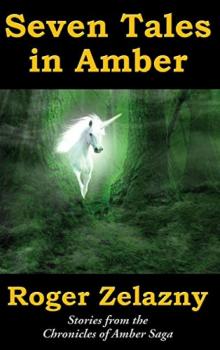 Seven Tales in Amber
Seven Tales in Amber Frost and Fire
Frost and Fire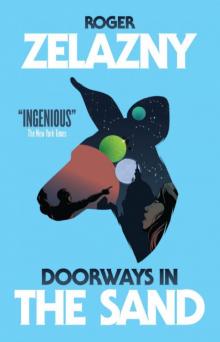 Doorways in the Sand
Doorways in the Sand Unicorn Variation
Unicorn Variation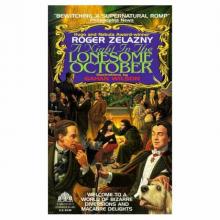 A Night in the Lonesome October
A Night in the Lonesome October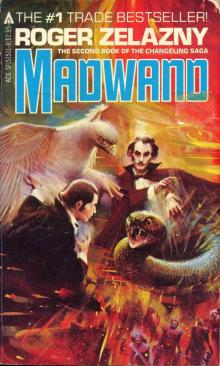 Madwand
Madwand Jack Of Shadows
Jack Of Shadows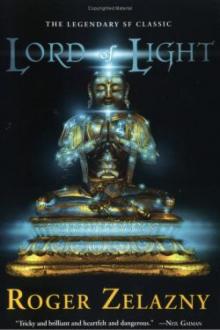 Lord of Light
Lord of Light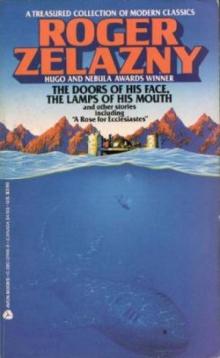 The Doors of His Face, The Lamps of His Mouth and Other Stories
The Doors of His Face, The Lamps of His Mouth and Other Stories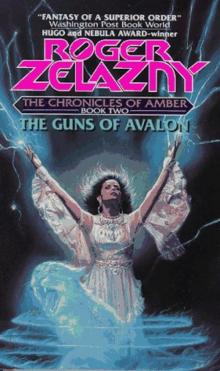 Guns Of Avalon tcoa-2
Guns Of Avalon tcoa-2 Coils
Coils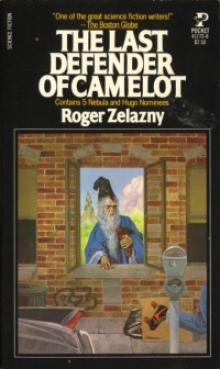 The Last Defender Of Camelot
The Last Defender Of Camelot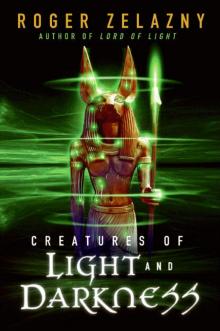 Creatures of Light and Darkness
Creatures of Light and Darkness This Immortal
This Immortal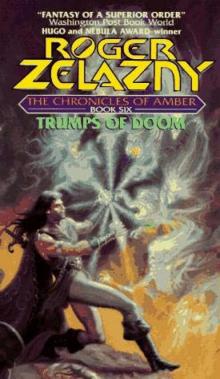 Trumps of doom tcoa-6
Trumps of doom tcoa-6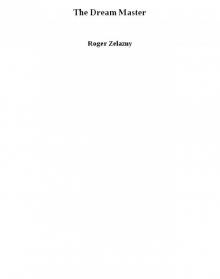 The Dream Master
The Dream Master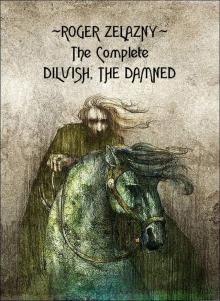 The Complete Dilvish, The Damned
The Complete Dilvish, The Damned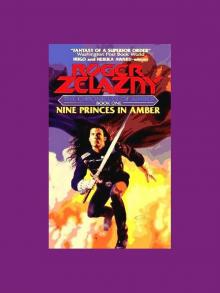 Nine Princes in Amber
Nine Princes in Amber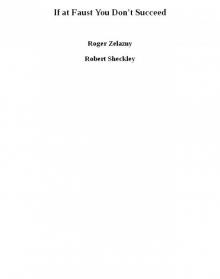 If at Faust You Don't Succeed
If at Faust You Don't Succeed Here there be dragons
Here there be dragons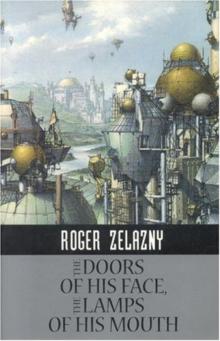 The Doors Of His Face, The Lamps Of His Mouth
The Doors Of His Face, The Lamps Of His Mouth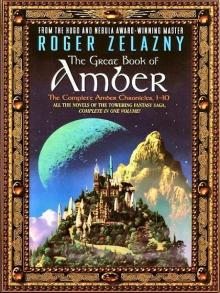 The Great Book of Amber - Chronicles 1-10
The Great Book of Amber - Chronicles 1-10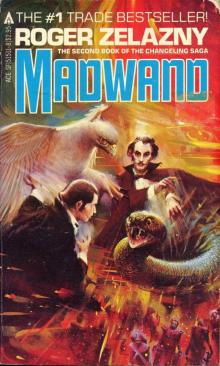 Madwand (Illustrated)
Madwand (Illustrated) The Chronicles of Amber
The Chronicles of Amber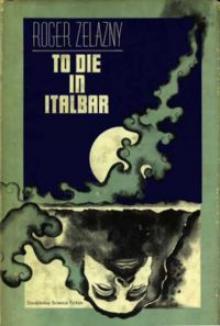 To Die In Italbar
To Die In Italbar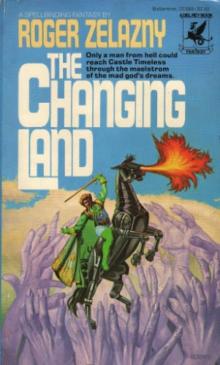 The Changing Land
The Changing Land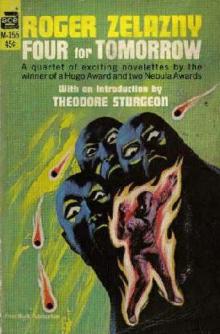 The Furies
The Furies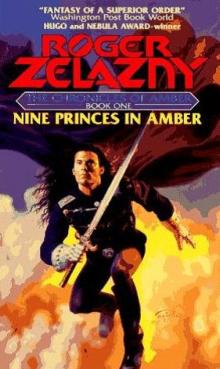 Nine Princes In Amber tcoa-1
Nine Princes In Amber tcoa-1 Last Of The Wild Ones
Last Of The Wild Ones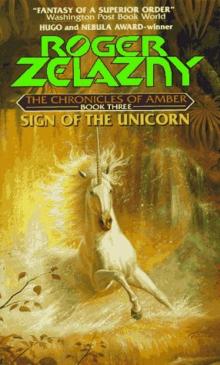 Sign of the Unicorn tcoa-3
Sign of the Unicorn tcoa-3 My Name is Legion
My Name is Legion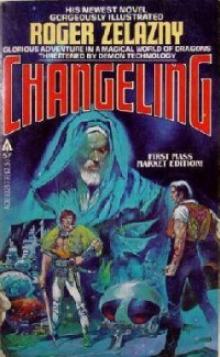 Wizard World 1: Changeling
Wizard World 1: Changeling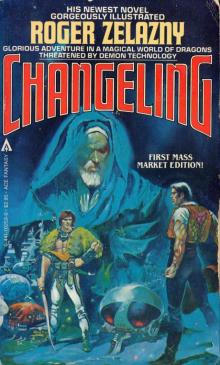 Changeling
Changeling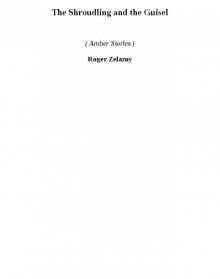 The Shroudling and the Guisel (amber stories)
The Shroudling and the Guisel (amber stories)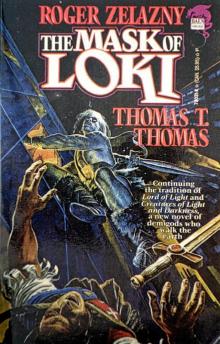 The Mask of Loki
The Mask of Loki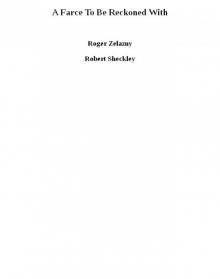 A Farce To Be Reckoned With
A Farce To Be Reckoned With Roadmarks
Roadmarks When Pussywillows Last in the Catyard Bloomed (rtf)
When Pussywillows Last in the Catyard Bloomed (rtf)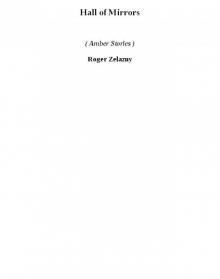 Hall of Mirrors (amber stories)
Hall of Mirrors (amber stories) Permafrost
Permafrost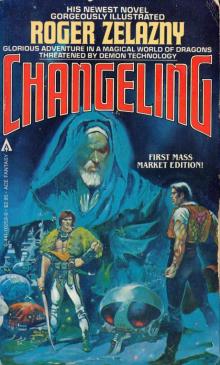 Changeling (Illustrated)
Changeling (Illustrated)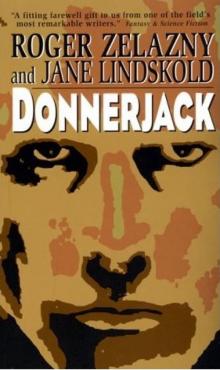 Donnerjack
Donnerjack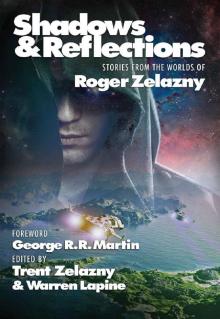 Shadows & Reflections: A Roger Zelazny Tribute Anthology
Shadows & Reflections: A Roger Zelazny Tribute Anthology The Courts Of Chaos tcoa-5
The Courts Of Chaos tcoa-5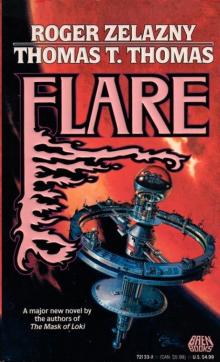 Flare
Flare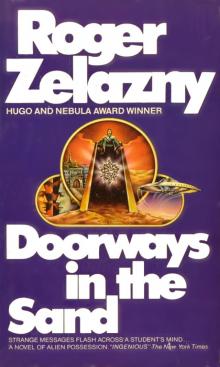 Doorsways in the Sand
Doorsways in the Sand The Great Book of Amber
The Great Book of Amber Home Is the Hangman
Home Is the Hangman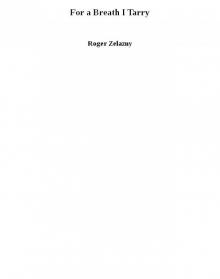 For a Breath I Tarry
For a Breath I Tarry Isle Of The Dead
Isle Of The Dead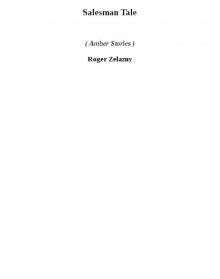 Salesman Tale (amber stories)
Salesman Tale (amber stories) Dismal Light
Dismal Light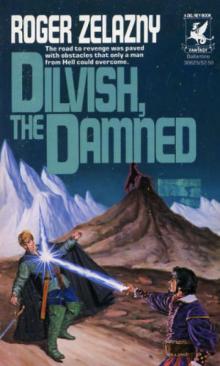 Dilvish, The Damned
Dilvish, The Damned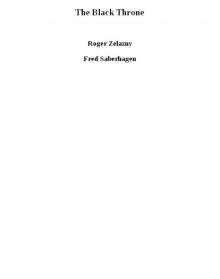 The Black Throne
The Black Throne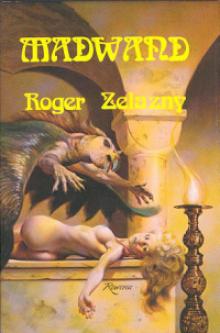 Wizard World 2: Madwand
Wizard World 2: Madwand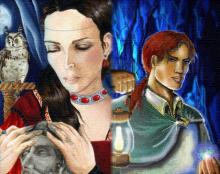 The Salesman's Tale
The Salesman's Tale